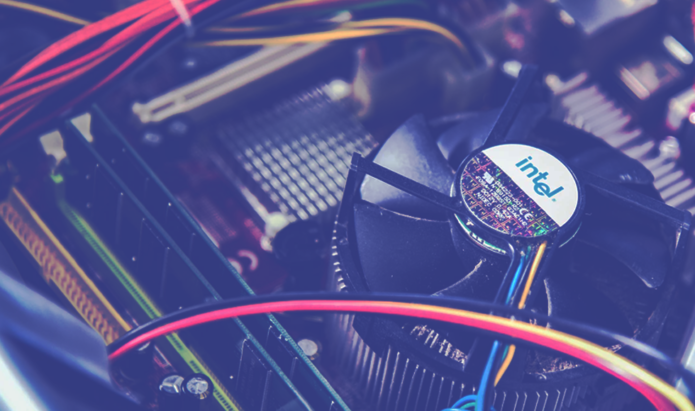The recent shooting at the Robb Elementary School at Ulvade Texas, where an 18 year old boy shot dead 19 children and injured 2 adults has left us all wondering once again, what would it take for America to get over its gun problem. If you haven’t heard about the tragedy (or can’t recall because you are reading this long after this post was first published), check this timeline.
Today we woke up to another shooting. This time in a hospital in Tulsa Oklahoma. Which got me thinking. One tragic news story has news outlets looking for others in the similar vein. So yes we are going to hear more stories about shootings in America and around the world in the next few weeks or months. It is probably possible for tech to filter out these stories. But wearing blinders to the problem isn’t the solution.
As a person interested in technology, I felt that there were some obvious solutions to help prevent such heinous crimes. So to start understanding why these hadn’t been implemented I first had to understand the issue. A little internet research about the tech lead me down the rabbit hole, to the United Nation’s Office On Drugs and Crime’s global study on Homicide. You can check out the executive summary here.
Key facts that stood out for me:
- While the American homicide rate is higher than other countries, Europe’s homicide rate has been declining by 63% since 2002.
- Deaths in homicides far outweigh the death by terrorist activities, however deaths connected to organised crime has been approximately equal to all the loss of life caused by armed conflicts across the world combined.
- The US amounted for 37% of the global total of intentional homicide.
- Yet paradoxically while the national homicide rate rose by 2% between 2003 and 2016, the homicide rate in the large cities have dropped by 29%. Indicating that homicidal violence is on the increase outside the cities.
- Oceania had the lowest rate of intentional homicide.
- Firearms were involved in more than half of all homicides worldwide in 2017.
- In Northern United States and Canada a majority of homicides were perpetrated with sharp objects.
I think it has been quite evident that with easy access to guns and gun ownership you see a proportionate rise in homicides across the world. Which makes me a little happy to know that gun ownership in India is such a complex affair and that procuring guns isn’t an easy task either. You can’t walk into a shop and buy a gun after all.
We still remember a few years back the Christchurch mosque shooting incident in Newzealand in 2019. Fifty One people were killed and another fifty injured. Which was very unusual for the country that had few gun related mass shootings. What made this tragedy different though was what came in its wake. Within a month there was an immediate ban on semi-automatic weapons and assault rifles. Current owners had to trade in their guns. That is remarkable in contrast with the United States, where there has been little reform in gun laws for over 25 years!
So let’s say you weren’t so fortunate to live in a gun regulated environment. Could technology help? How can technology make schools safer. Is there anything from popular fiction and tv that could inspire change in gun ownership and usage? These were the thoughts I had when I sat down to pen this short article.
An AI heads up
If you are a tech enthusiast you might have come across one of many AI enabled retail solutions that use in-store cameras that identify when someone picks up a product from a shelf. The tracking and recognition system is so good that it can be trained to distinguish between different products just by their packaging. Imagine you grabbed a bunch of chocolate bars off the shelf. The Deep Learning image and object recognition system can tell if you picked up a Mars, Snickers or Bounty, from across the room. This is the very the tech behind driverless cars avoiding objects.
It seemed to me as a no-brainer then that a warning system could be built using AI that used Deep Learning algorithms to identify a person holding a gun or knife and trigger an alarm. Or even lock doors. This idea is hardly new or revolutionary. Some research on Google turned up multiple research thesis on this. A little more digging and you are likely to come across companies that are beginning to sell customisable off the shelf solutions that do just this.
Key challenges:
- Architecture – depending on the layout of the school you would need to place IOT cameras at the entrance and across common thoroughfares.
- Real time recognition – the processing of live-feed data needs to be instantaneous for these systems to work. Which means there is going to be a certain amount of server side computing necessary to make this work.
- Cost – Lets face it the government is going to have to subsidise the cost of this implementation to get it off the ground for those schools that are in the suburbs that don’t have deep pockets but are likely targets.
In-built Gun controls
The premise of gun ownership and gun laws in the United States revolves around personal protection. Yet mass shootings are never singular. There is always more than one victim. What’s more, sometimes we hear stories of mass shootings perpetrated by adolescents using their parents guns. So what if we could have smart guns that could understand context. Guns that would require finger print verification to be activated. Or some other such check that recognises the owner of the gun. Sure its an idea straight out of Judge Dredd, but perhaps it has some warrant to it.
Key Challenges:
- It only works if you get rid of existing guns. Due to the sheer volume of existing guns there are bound to be ways to procure them.
- There is going to be a lot of political push-back.
The truth of this tale is technology can only do so much.
In the end, I realise that while technology might be able to provide warnings, at the end of the day it is the attitude towards gun ownership and usage is what needs to shift. If New Zealand could do it, so could other countries. Canada just stepped in and froze its gun ownership.
Yet it’s not just the politicians that need to make policy. The news media and the entertainment media, with the likes of Hollywood, need to play their part too. For example, when reporting on the recent massacre, I was appalled that many news outlets compared the shooting to an earlier tragedy at Sandyhook. While true, the problem with that is it sets a kind of benchmark for the deranged mind to want to exceed in future scenarios. Which could be entirely avoided without drawing such comparisons in the public domain. If you compare popular crime shows from England with those of the United States, the depiction of the amount of gun play is very evident.
Till we collectively make an active choice to downplay the narrative behind gun ownership and the power that gun owners wield, I hope that big tech firms step up with affordable solutions to identify gun wielding individuals.
At the same time I realise that for every technological innovation that becomes widespread there will also be those who find ways to circumvent and hack these solutions and that knowledge will be easily available online. That just happens to be the circular nature of the evolution of technology.









